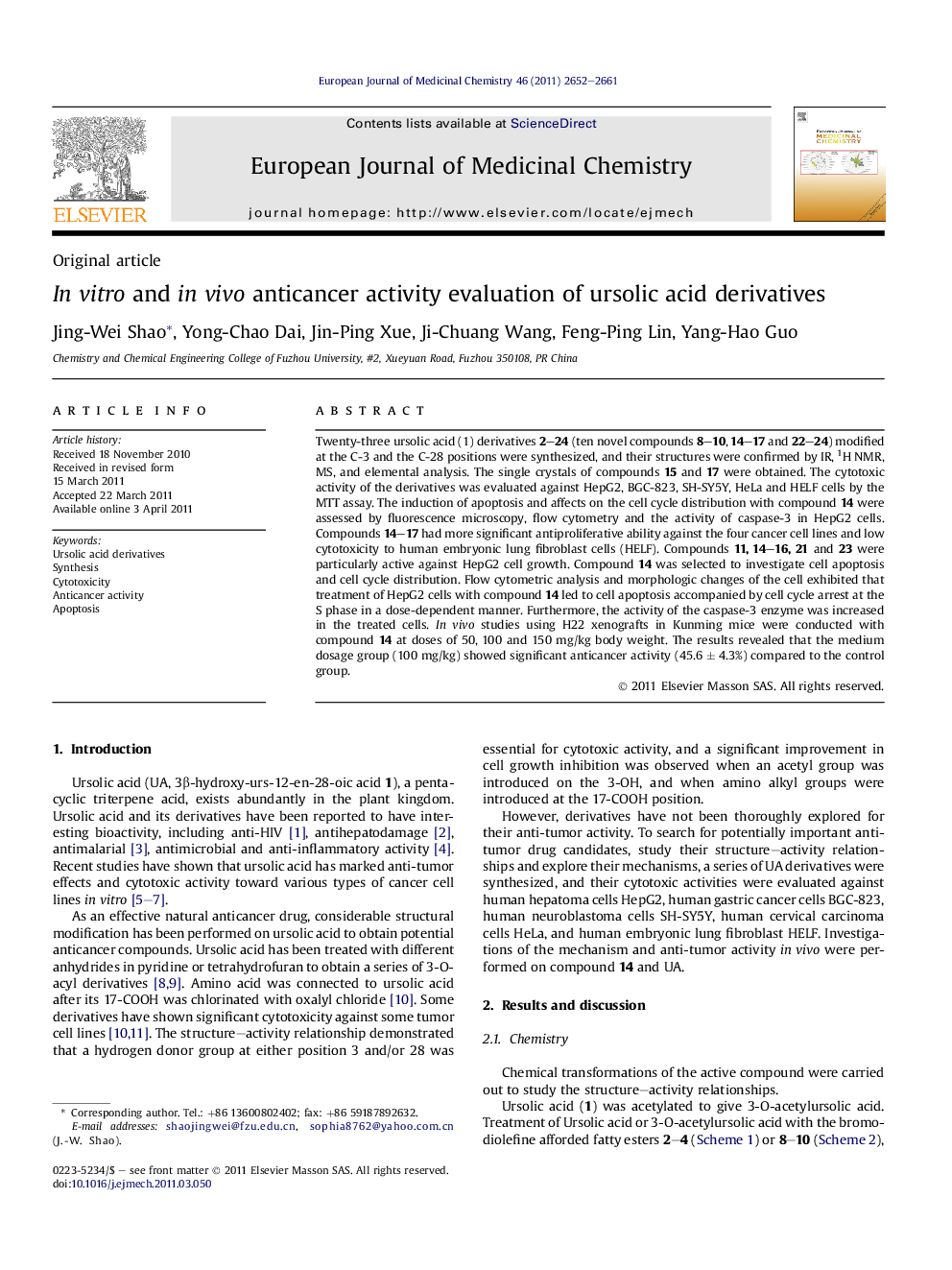| Article ID | Journal | Published Year | Pages | File Type |
|---|---|---|---|---|
| 1393021 | European Journal of Medicinal Chemistry | 2011 | 10 Pages |
Twenty-three ursolic acid (1) derivatives 2–24 (ten novel compounds 8–10, 14–17 and 22–24) modified at the C-3 and the C-28 positions were synthesized, and their structures were confirmed by IR, 1H NMR, MS, and elemental analysis. The single crystals of compounds 15 and 17 were obtained. The cytotoxic activity of the derivatives was evaluated against HepG2, BGC-823, SH-SY5Y, HeLa and HELF cells by the MTT assay. The induction of apoptosis and affects on the cell cycle distribution with compound 14 were assessed by fluorescence microscopy, flow cytometry and the activity of caspase-3 in HepG2 cells. Compounds 14–17 had more significant antiproliferative ability against the four cancer cell lines and low cytotoxicity to human embryonic lung fibroblast cells (HELF). Compounds 11, 14–16, 21 and 23 were particularly active against HepG2 cell growth. Compound 14 was selected to investigate cell apoptosis and cell cycle distribution. Flow cytometric analysis and morphologic changes of the cell exhibited that treatment of HepG2 cells with compound 14 led to cell apoptosis accompanied by cell cycle arrest at the S phase in a dose-dependent manner. Furthermore, the activity of the caspase-3 enzyme was increased in the treated cells. In vivo studies using H22 xenografts in Kunming mice were conducted with compound 14 at doses of 50, 100 and 150 mg/kg body weight. The results revealed that the medium dosage group (100 mg/kg) showed significant anticancer activity (45.6 ± 4.3%) compared to the control group.
Graphical abstractTwenty-three ursolic acid (1) derivatives 2–24 ( ten novel compounds 8–10, 14–17 and 22–24) modified at the C-3 and the C-28 positions were synthesized and evaluated for cytotoxicities against the HepG2, BGC-823, SH-SY5Y, HeLa and HELF cell lines by MTT assay. Compounds 14–17 had more significant antiproliferative ability to above four cancer cells and low cytotoxic to HELF. Compounds 11, 14–16, 21 and 23 were particularly active to inhibit HepG2 cells growth. Compound 14 induced apoptosis and inhibited growth at the S phase of cell cycle in a dose-dependent manner, and increased the activity of caspase-3 enzyme in HepG2 cells. In addition, the single crystals of compounds 15 and 17 were obtained.Figure optionsDownload full-size imageDownload as PowerPoint slideHighlights► Synthesized ten novel ursolic acid derivatives which were modified at the C-3 and the C-28 positions. ► Five novel ursolic acid derivatives have selective cytotoxic activity to four kinds of human cancer cells and human embryonic lung fibroblast cells. ► Compound 14 showed significant anticancer activity in vitro and in vivo. ► Compound 14 induces apoptosis through caspase-3 activation and arrests cell cycle progression at the S phase in HepG2 cells. ► The single crystals of compounds 15 and 17 were obtained.
